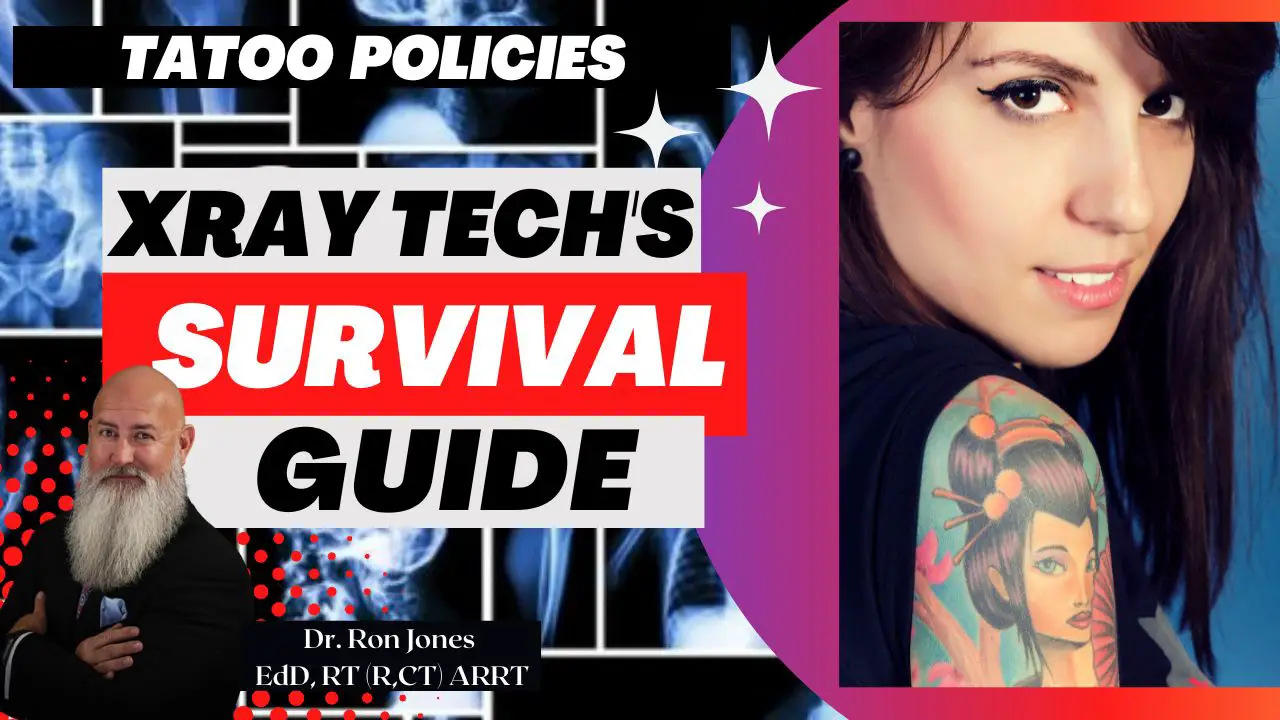Tattoo Policies in Radiology: Balancing Personal Expression and Professionalism
Introduction:
Radiology, a captivating field merging medicine and technology, offers exciting opportunities for aspiring healthcare professionals. However, like any profession, there are guidelines and policies that must be understood and followed.
In this comprehensive guide, we explore the significance of tattoo policies for radiology students, encouraging their passion for self-expression while emphasizing the importance of professionalism.
Embracing Personal Expression:
Radiology students, much like professionals in any other field, often embrace unique forms of self-expression, including tattoos.
These artistic expressions can hold deep personal meaning, reflecting their individuality and life experiences.
However, as future technologists, striking a balance between self-expression and meeting the expectations of the healthcare environment is vital.
Navigating Tattoo Policies:
Tattoo policies vary among clinical settings, ranging from complete coverage requirements to more relaxed approaches.
It is crucial for radiology students to familiarize themselves with and respect the policies of the facilities where they undergo clinical training.
Understanding and adhering to these policies ensure a seamless transition into the professional realm of radiology.
Adapting to Dress Code:
In many clinical settings, covering visible tattoos is a common requirement. Radiology students should be prepared to dress appropriately, which may involve wearing long sleeves, scrub jackets, or specialized tattoo cover-up products.
These adjustments, though initially perceived as inconvenient, play a pivotal role in maintaining professionalism and creating a comfortable environment for patients.
Engaging in Professionalism:
Professionalism encompasses more than just appearance; it extends to behavior, communication, and interactions with patients and colleagues.
Radiology students must consistently demonstrate their commitment to professionalism through their actions and conduct, establishing themselves as competent and compassionate professionals.
Educational Support:
Radiology programs play a crucial role in preparing students for their clinical experiences. It is imperative for these programs to provide guidance on tattoo policies and foster an understanding of the expectations within the healthcare industry.
By educating students about the rationale behind these policies, programs can help students navigate the challenges of balancing personal expression and professionalism.
Embracing Change:
As society evolves, perceptions of professionalism and acceptance of visible tattoos are changing. While some institutions may still maintain strict policies, others recognize the value of diversity and individuality in the workplace.
Radiology students can contribute to shaping these evolving attitudes by exemplifying professionalism and making positive contributions to the field.
Conclusion:
Radiology students embark on a journey that merges cutting-edge technology with compassionate care. Navigating tattoo policies is a crucial aspect of their professional growth.
By embracing the need for professionalism while honoring personal expression, students can strike a harmonious balance that allows them to excel in their careers. As the radiology field continues to evolve, students must remain adaptable, well-informed, and committed to delivering exceptional patient care.
Through their dedication, they will thrive as radiology technologists and contribute to a more inclusive and accepting healthcare environment.
I hope this comprehensive guide helps you navigate tattoo policies in the field of radiology, empowering you to embrace personal expression while upholding professionalism.
If you have any questions or experiences to share, please leave a comment below. I value your insights and look forward to engaging with you!
[I have been in healthcare for over 30 years. Phlebotomist turned Rad Tech, I am trained in Xray, CT, Ultrasound and MRI. I spent over a decade in radiology administration and now spend my time teaching at a local radiography school. I enjoy giving guest lectures on different radiology topics at annual conferences across the country. – Dr. Ron Jones EdD, RT (R, CT) ARRT]


